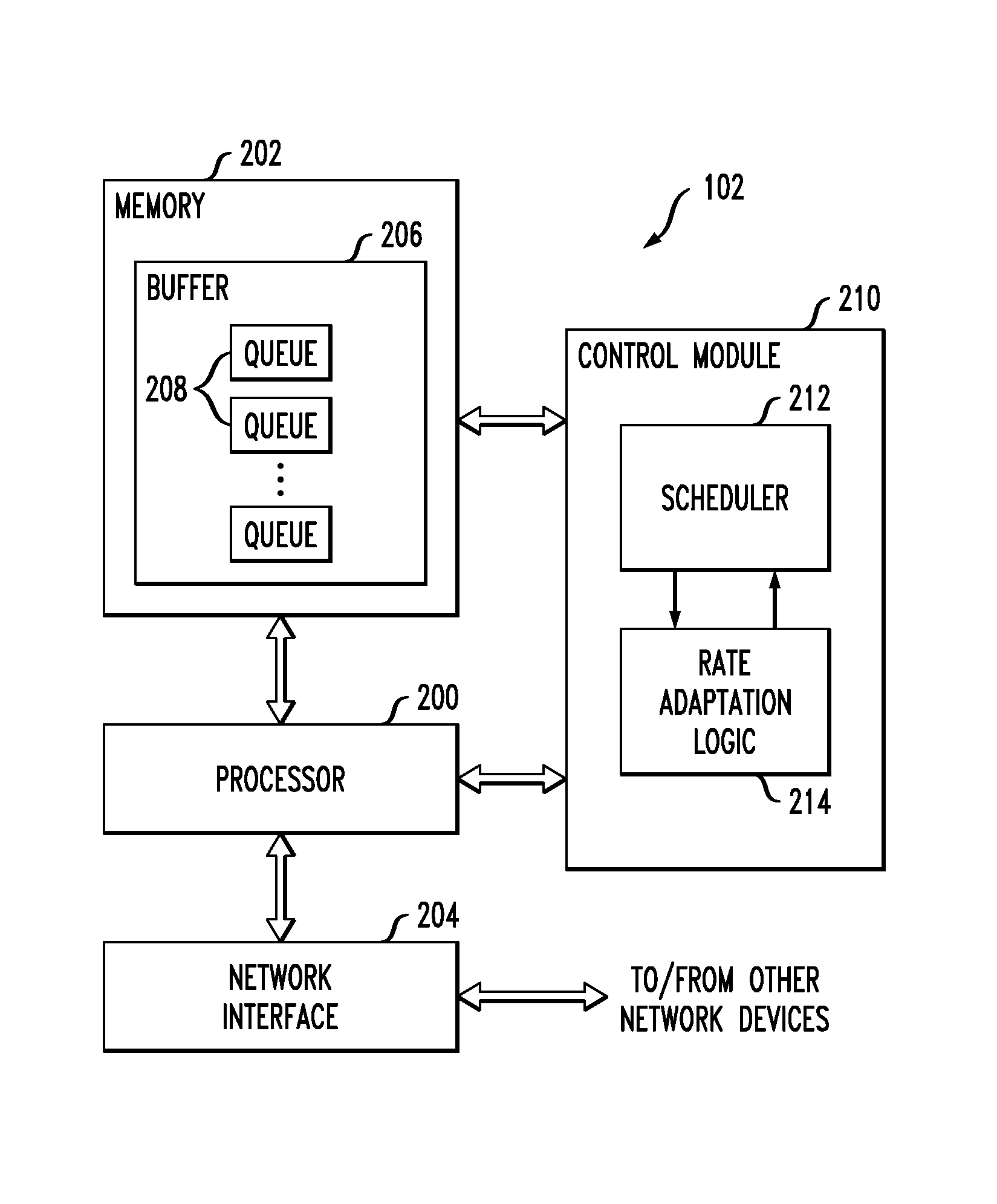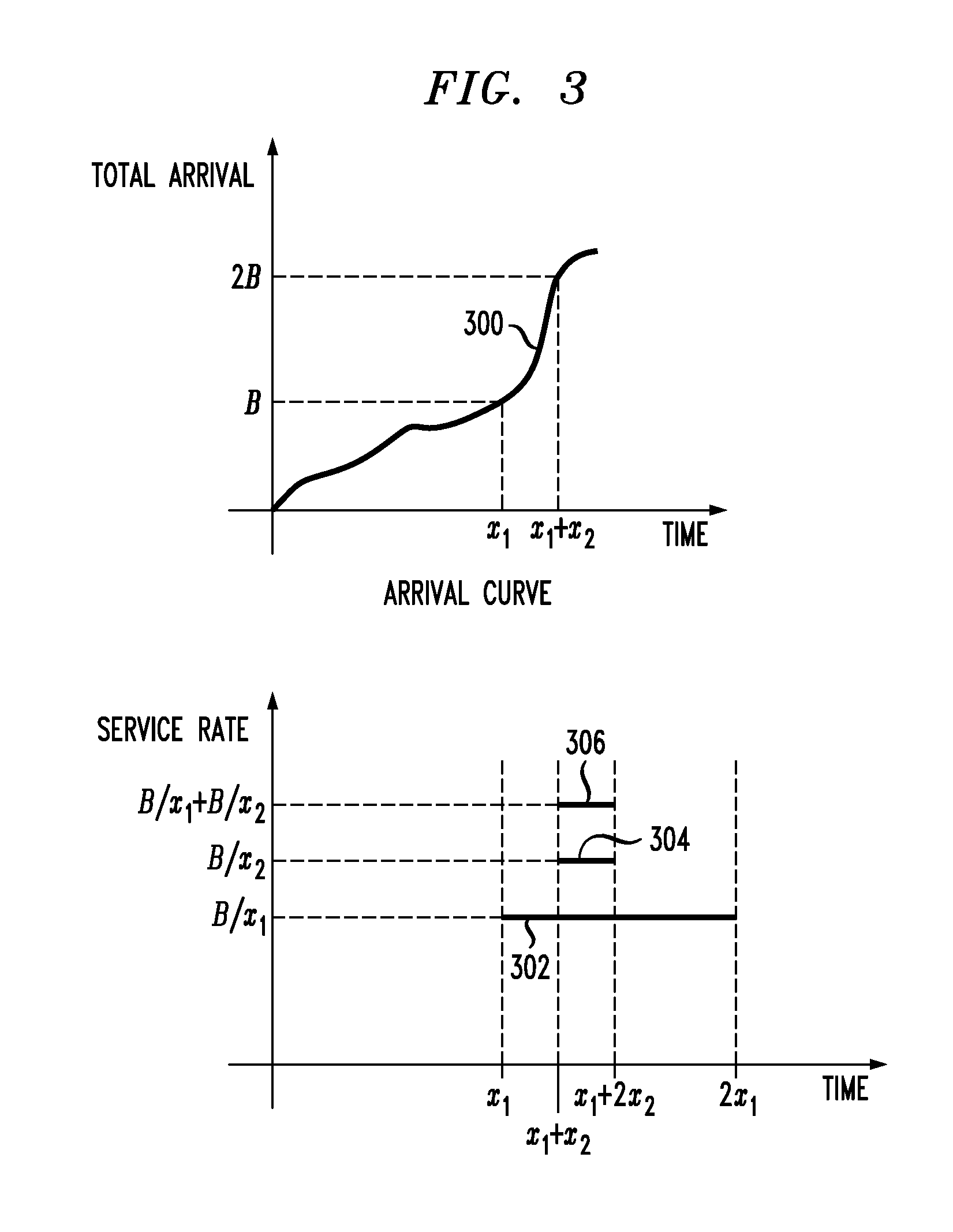Energy-efficient network device with coordinated scheduling and processor rate control
a network device and processor technology, applied in the field of communication networks, can solve the problems of enormous consumption, routers and switches operating at full speed and consuming maximum power, and achieve the effect of reducing packet delay through the network and increasing the energy efficiency of the communication network
- Summary
- Abstract
- Description
- Claims
- Application Information
AI Technical Summary
Benefits of technology
Problems solved by technology
Method used
Image
Examples
Embodiment Construction
[0018]The invention will be described herein in conjunction with illustrative embodiments of communication networks, network devices and associated coordinated scheduling and rate adaptation processes. It should be understood, however, that the invention is not limited to use with the particular networks, devices and processes described, but is instead more generally applicable to any network application in which it is desirable to provide improved energy efficiency by coordinated scheduling and rate adaptation within each of a plurality of network devices.
[0019]FIG. 1 shows a communication network 100 comprising a plurality of interconnected network devices 102. The network devices 102 may comprise routers, switches, servers, computers or other processing devices, in any combination, examples of which may also be referred to herein as network nodes or terminals. A given network device will generally comprise a processor and a memory coupled to the processor, as well as a transceive...
PUM
 Login to View More
Login to View More Abstract
Description
Claims
Application Information
 Login to View More
Login to View More - R&D
- Intellectual Property
- Life Sciences
- Materials
- Tech Scout
- Unparalleled Data Quality
- Higher Quality Content
- 60% Fewer Hallucinations
Browse by: Latest US Patents, China's latest patents, Technical Efficacy Thesaurus, Application Domain, Technology Topic, Popular Technical Reports.
© 2025 PatSnap. All rights reserved.Legal|Privacy policy|Modern Slavery Act Transparency Statement|Sitemap|About US| Contact US: help@patsnap.com



